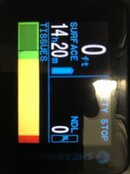My impression is that the decompression algorithms are far more reliable than are the divers using them.
I can't imagine anyone disagreeing with that, but it represents two different problems, human factors and inadequate input data.
The science behind it is not accurate yet,
Related to tursiops comment, the problem is both lack of understanding (the science) and ability to measure all the variables that influence DCS. There is a significant black hole of factors called "human variability".
Time, depth, and the gas mix are easy to measure and by far the most impactful. We know that exertion and temperature are lesser factors but so is age, overall health, smoking history, and what you consumed in the last 48 hours. For all we know, so is gender, family history, state of mind and the phase of the moon.
This leads us to two options: Figure out ways to measure all the secondary factors and how they impact the algorithms, or find a way to take direct measurements of the gases coming out of solution that causes DCS. I believe that the latter will happen long before the former.
Meanwhile, we live with a system that has proven to be quite adequate and deal with rare exceptions when they occur — basically chamber ride(s) and lots of Oxygen.
Adjusting gradient factors, conservatism settings, not "pushing" NDLs, safety stops, lying to your computer about the mix you are using, and prophylactic Oxygen are all attempts at reducing DCS risk. Fortunately, DCS has been a pretty low risk to recreational Scuba divers long before dive computers were available.





